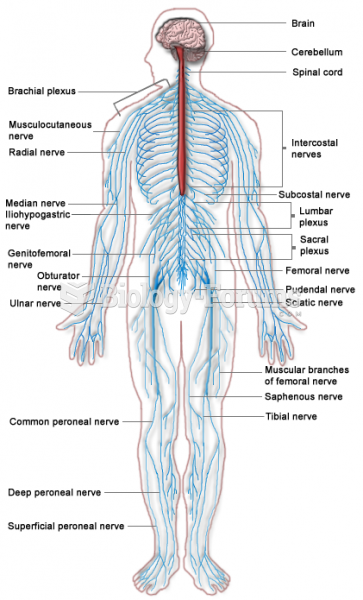This topic contains a solution. Click here to go to the answer
|
|
|
Did you know?
Although puberty usually occurs in the early teenage years, the world's youngest parents were two Chinese children who had their first baby when they were 8 and 9 years of age.
Did you know?
Medication errors are three times higher among children and infants than with adults.
Did you know?
Asthma cases in Americans are about 75% higher today than they were in 1980.
Did you know?
The familiar sounds of your heart are made by the heart's valves as they open and close.
Did you know?
Bacteria have been found alive in a lake buried one half mile under ice in Antarctica.







